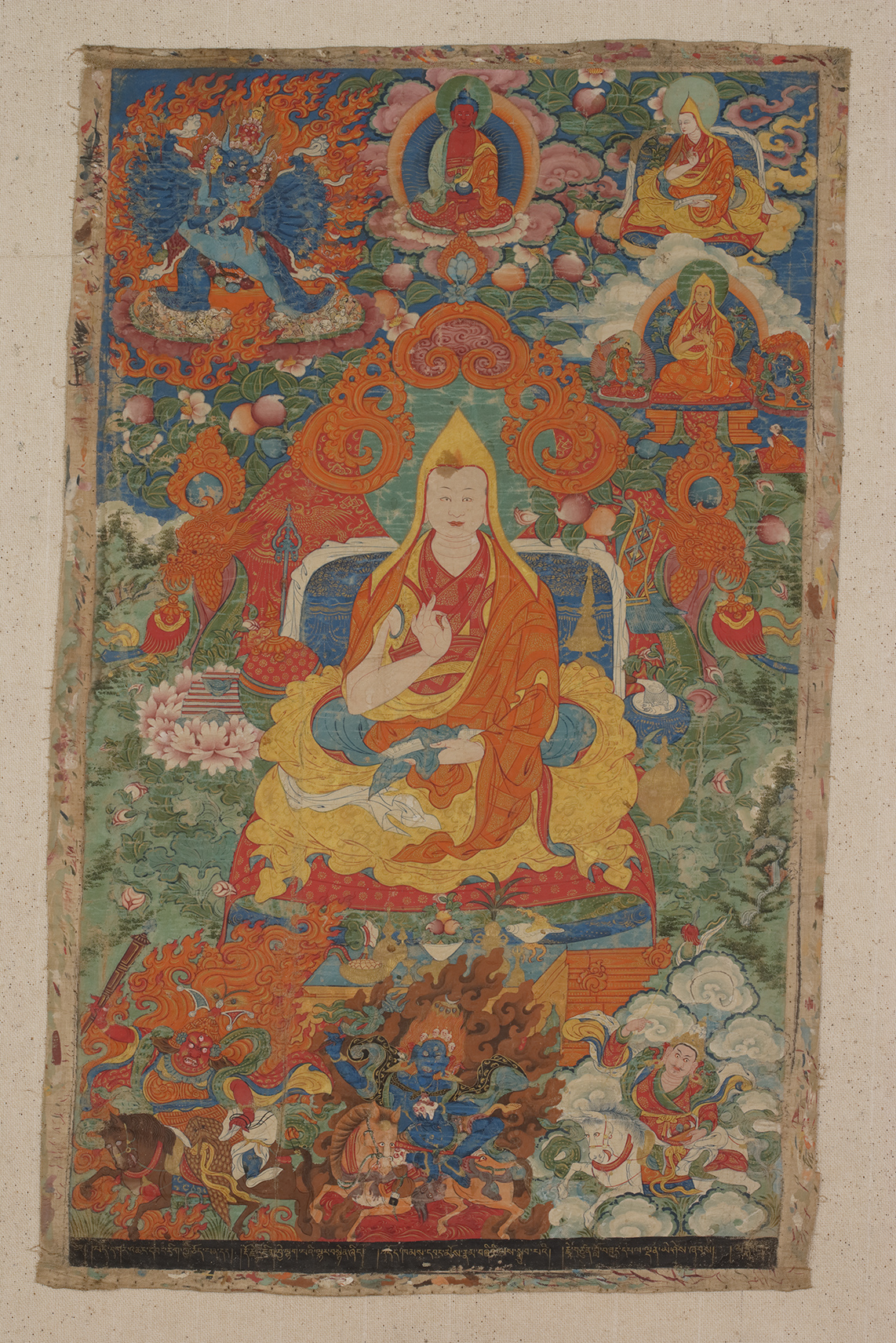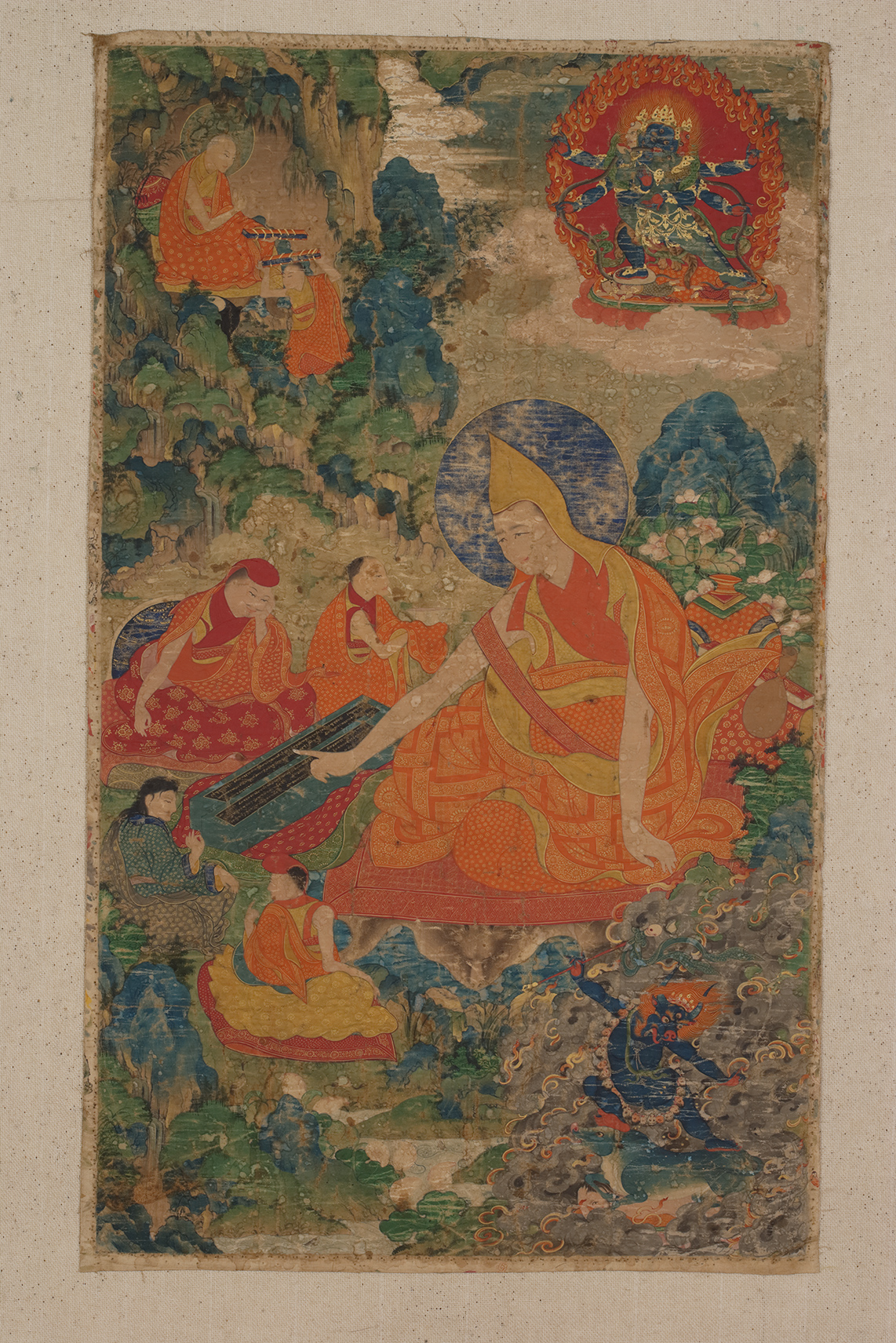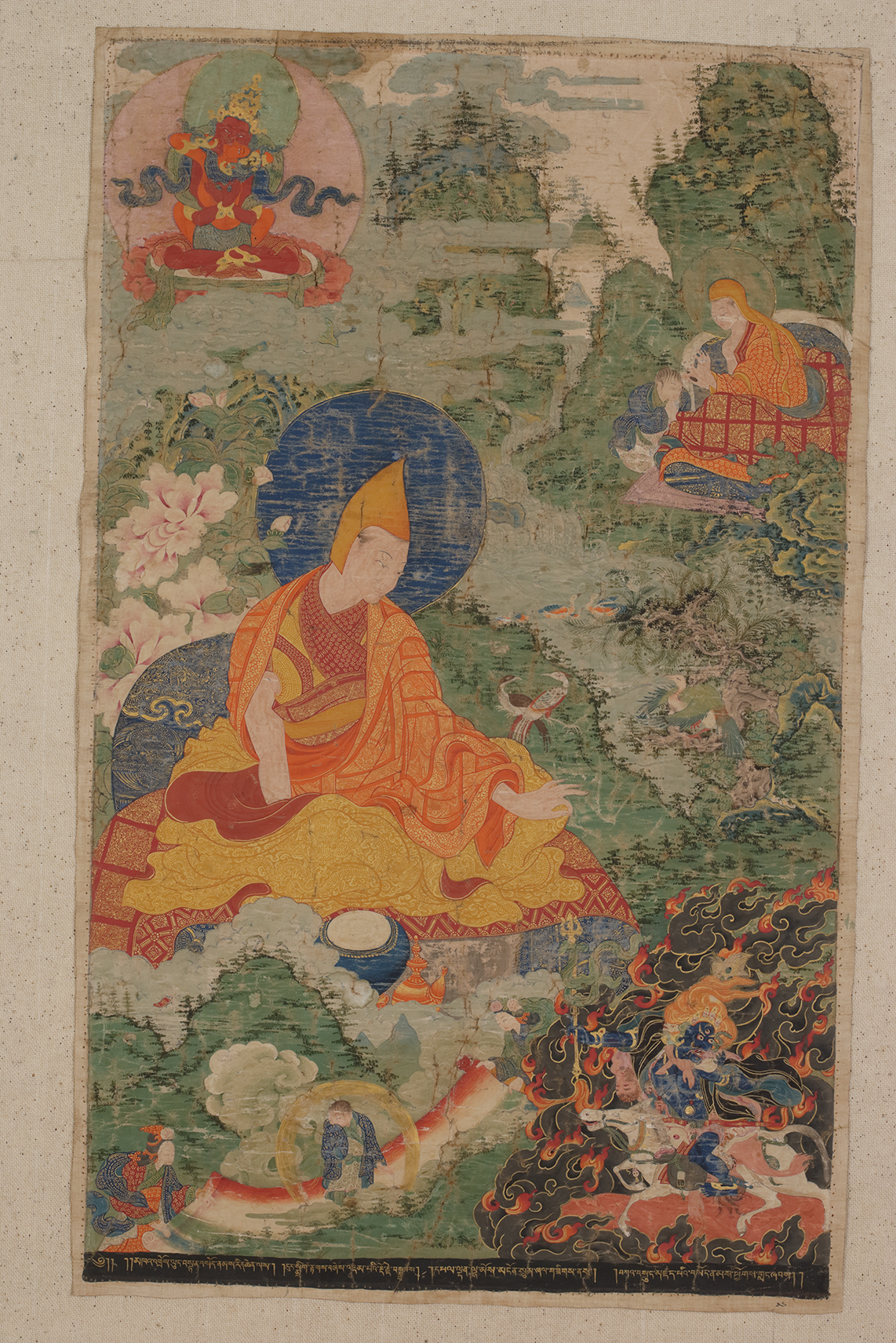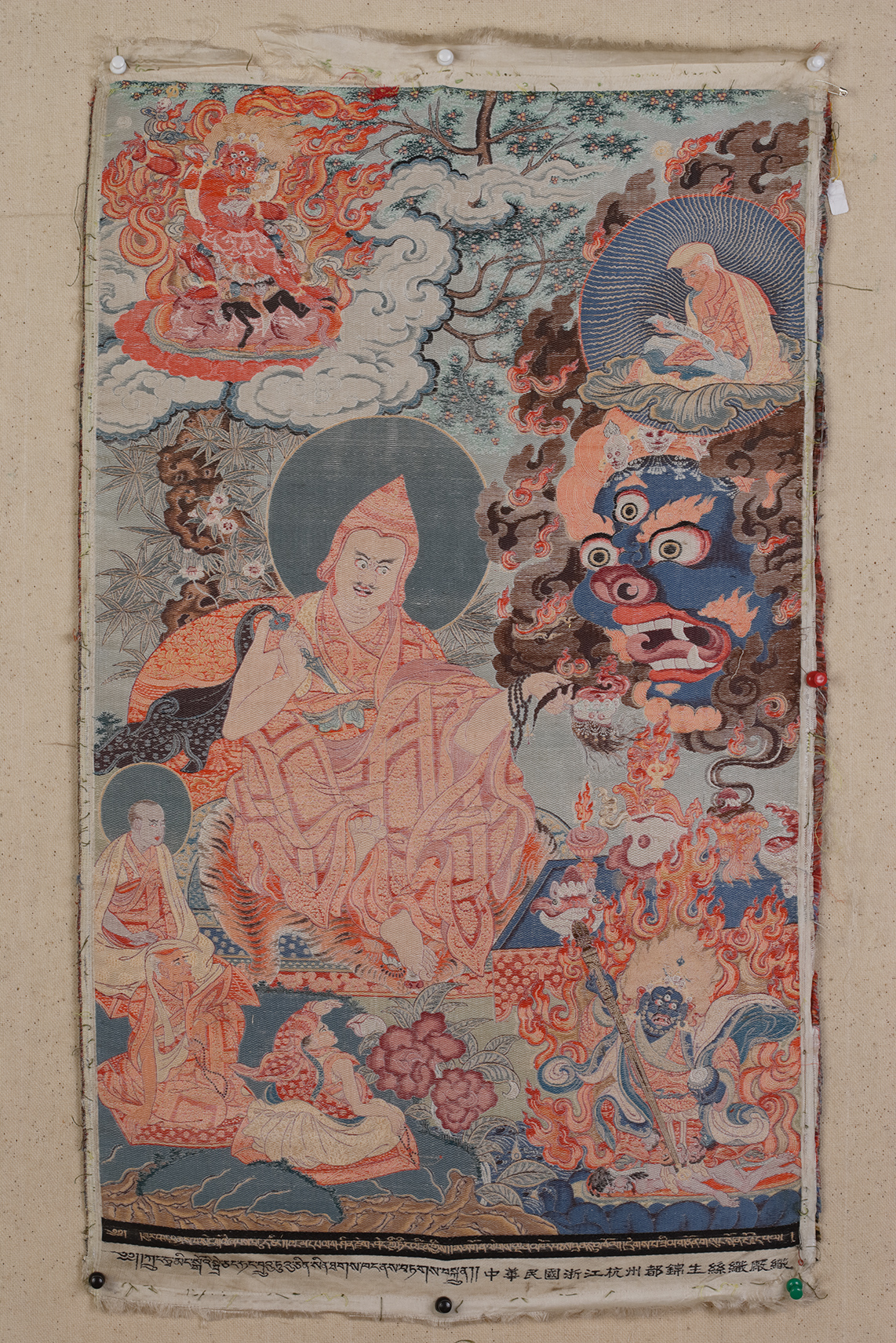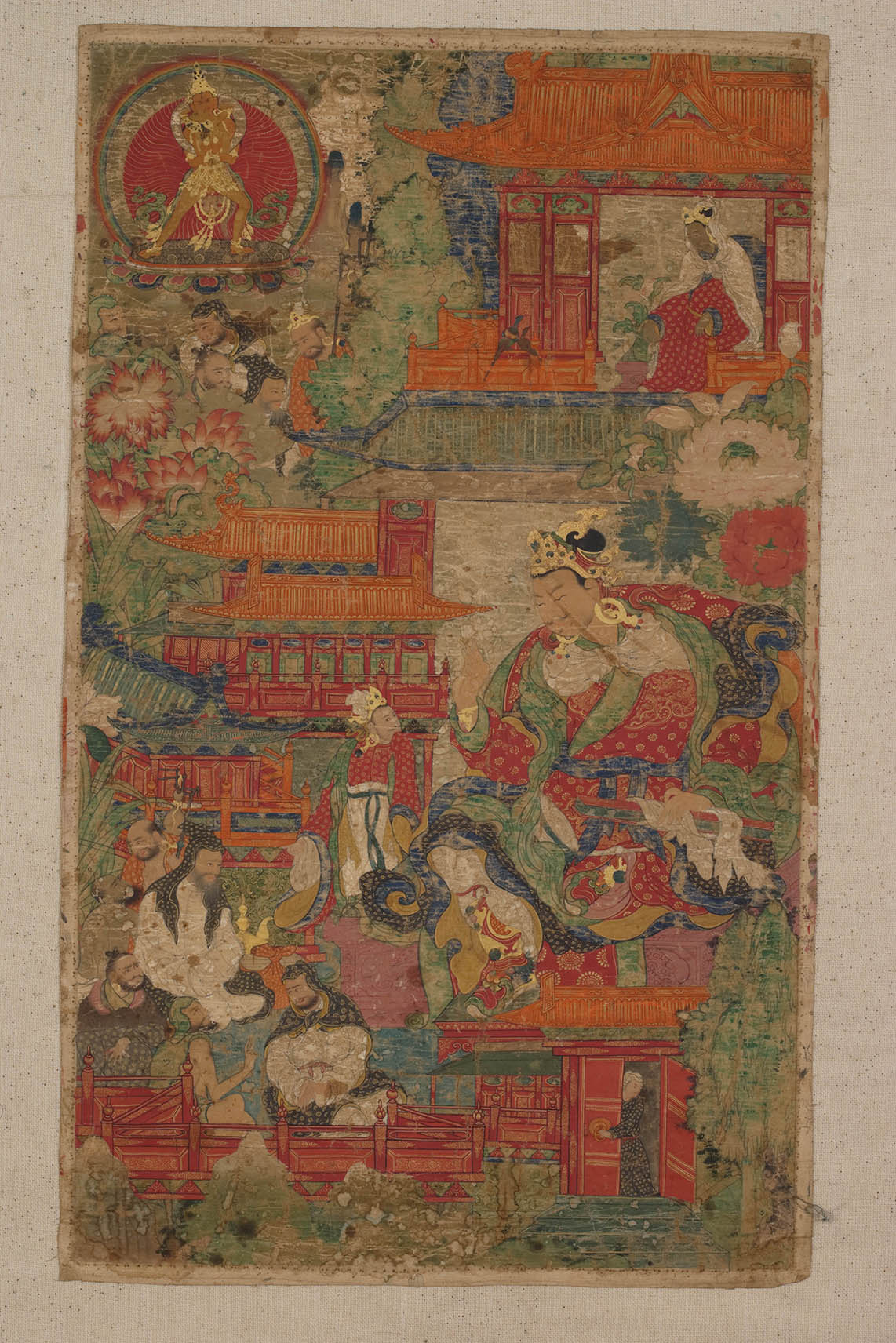The Dalai Lama and the Panchen Erdeni of Tibet
Two disciples of Tsongkhapa, Gedun Drupa (1391-1474) and Kedrup Je (1385–1438), were posthumously identified as the First Dalai Lama and the First Panchen Erdeni, respectively, which became the two foremost living Buddha lineages in the Gelug School. The title Dalai, the Mongolian word for "ocean," was bestowed upon the Third Dalai Lama (1543-1588) by the Mongolian ruler Altan Khan (1507-1582) of the Tumed. The Qing dynasty saw nine Dalai Lamas, from the Fifth to the Thirteenth. Panchen, on the other hand, is short for Pandita Chenpo, meaning "Great Pandita." The word Pandita is derived from the Sanskrit Paṇḍita, which means "Master of the Five Wisdoms."
The lineage of the Panchen Erdeni began with the Fourth Panchen Losang Chö kyi Gyaltsen (1570-1659), who received the title from Güshi Khan (1582-1654), leader of the Khoshut Mongols. The three immediate predecessors of Losang Chö kyi Gyaltsen were posthumously recognized as the First, Second, and Third Panchen Erdeni. The Qing dynasty saw six Panchens, from the Fourth to the Ninth. This section offers an iconographic introduction to the important reincarnated teachers of the Dalai and the Panchen lineages, and displays important artifacts connected with the visits to Beijing made by the Fifth Dalai Lama and the Sixth Panchen Lama to meet with Qing emperors. It also shows how the Qing court employed the "Golden Urn" system to select khubilghans and to what extent the practice impacted the living Buddha lineages of Tibetan Buddhism.
The Lineage of the Panchen Erdeni
Extant thangkas depicting the Panchen Erdeni can mostly be traced back to the Sixth Panchen (1738-1780). The system of lineage transmission of the Gelug School originated in India, and reincarnation was not merely repeated within the School itself.
The Origin of the Panchen Lineage: King Suchandra of Shambhala, gYung ston rDo rje dpal, the Second Panchen Erdeni, the Third Panchen Erdeni, the Sixth Panchen Erdeni
- The Origin of the Panchen Lineage: King Suchandra of Shambhala: Produced in central Tibet, second half of 17th century
- The Origin of the Panchen Lineage: the Second Panchen Erdeni: Produced in central Tibet, second half of 17th century
- The Origin of the Panchen Lineage: the Third Panchen Erdeni: Produced in central Tibet, second half of 17th century
- The Origin of the Panchen Lineage: the Sixth Panchen Erdeni: Produced in central Tibet, 18th century
- The Origin of the Panchen Lineage: gYung ston rDo rje dpal Produced in Zhejiang, early 20th century
- Collection of the Garuda Tibetan Art Studio
The Banchen Yuanliu (The Origin of the Panchen Lineage) is a collection of portraits of the Panchen lineage. In addition to portraits of the successive Panchens, the collection also includes portraits of previous reincarnations, including Subhūti (one of the ten principal disciples of the Buddha), King Suchandra of Shambhala, Bhavaviveka (a Madhyamakā philosopher), Abhayākaragupta (active in 12th-century India), Go Lotsawa (a famous Tibetan historian), Sakya Pandita (1182-1251), and gYung ston rDo rje dpal (1284-1365, a major figure of the Nyingma School). Historical records show that the earliest portraits of this collection were painted by the renowned artist Chos dbyings rgya mtsho (active in the mid-17th century) of Rear Tibet, who was also the founder of the Menbris Sama style. Respected by the Fourth Panchen, Chos dbyings rgya mtsho played an important role in projects such as the expansion of the Tashi Lhunpo Monastery.
It is very likely that the first version of the Banchen Yuanliu only contained portraits up to the Fifth Panchen (1663-1737), with the Sixth Panchen not being included until after the mid-18th century. The whole collection was then reproduced as prints by the Narthang Monastery, and many more reproductions ensued. This collection of portraits puts the Sixth Panchen in the middle, with the others on either side facing him. The portraits of King Suchandra of Shambhala, the Second Panchen, and the Third Panchen shown here all exhibit fine brushwork and coloring and are likely among the earlier portraits in this collection. The portrait of gYung ston rDo rje dpal was produced by the Hangzhou Silk Workshop in the early Republican era when the Ninth Panchen (1883-1937) traveled to China to propagate Buddhist teachings.
